Ohio offers a substantial economic base upon which many companies choose to capitalize on but the state also struggles with stagnant population growth like most of the Industrial Midwest which threatens its long-term economic prospects. Defining the Ohio marketplace involves performing comprehensive market research of the state and its regions. Market research begins to define growing economic, industry clusters, labor shed, transportation networks, and supply chains of targeted regions and to develop potential real estate site options for each of these markets. Regional economic performance, common industry clusters to the company, the availability of a skilled workforce, and the cost of doing business for the company are all researched and reviewed for the development of a market research report.
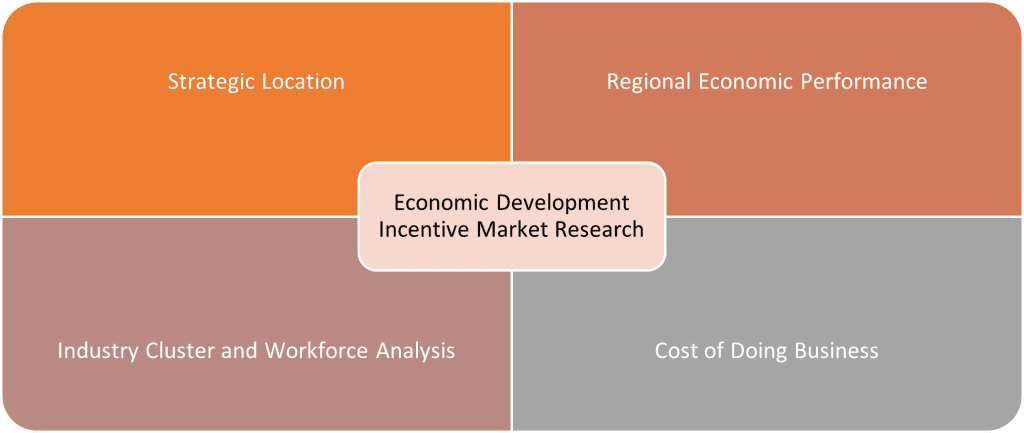
Ohio’s strategic location cannot be undersold. The state of Ohio is located within 500 miles of half the population of the United States. This access to East Coast, Midwest, and Southern markets play a critical role in Ohio’s location for major manufacturing, logistics, and distribution centers—all major economic drivers with high-wage jobs. Ohio is also home to a large population base with mid to large size cities spread out through the state. Unlike other Midwestern states, Ohio is not dominated by one large metro area but enjoys the benefits of three top 30 Metropolitan Statistical Areas and then a series of mid-sized communities that can provide a pool of workers. Ohio also benefits from a massive supply of fresh water. Ohio’s northern boundary of Lake Erie connects the state to the Great Lakes. The Great Lakes are the largest group of freshwater lakes on Earth by total area and are the second largest by total volume, containing 21% of the world’s surface fresh water by volume. Ohio’s population spread and industrial history also created substantial infrastructure within the state. Ohio has the third highest amount of rail lines in the United States- only behind Texas and Illinois. Ohio’s higher education system has spread universities and colleges to all corners of the state as well as the interstate and state highway network that places Ohio in ninth place among the states for the amount of highway miles—a strong showing considering the relatively small size of the state.
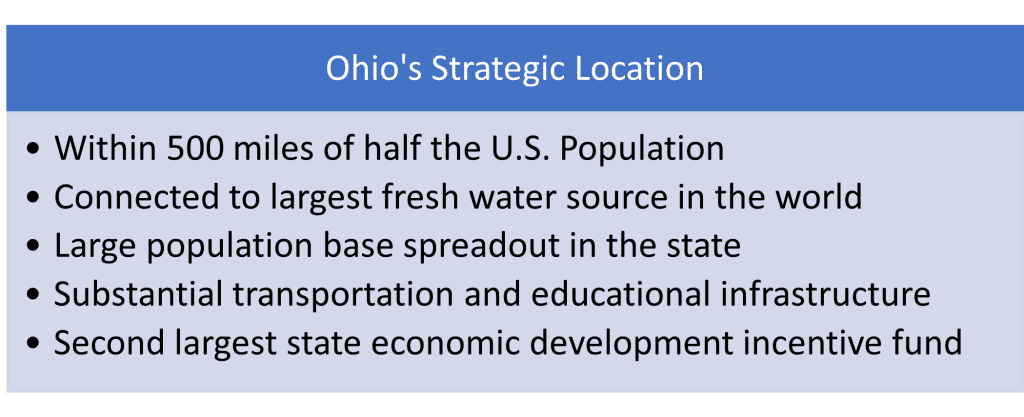
Overall macroeconomic performance of a region is a critical measure for companies considering a economic development incentive site. Generally, companies seek out growing markets that attract industry and talent. Gross domestic product (GDP), the featured measure of U.S. output, is the market value of the goods and services produced by labor and property located in the United States. Ohio’s major metro regions of Columbus, Cleveland, and Cincinnati have experience GDP growth since 2001 but lag behind competitors like Charlotte, Raleigh, and Tampa who are enjoying the economic benefits of growth in the Southern United States.
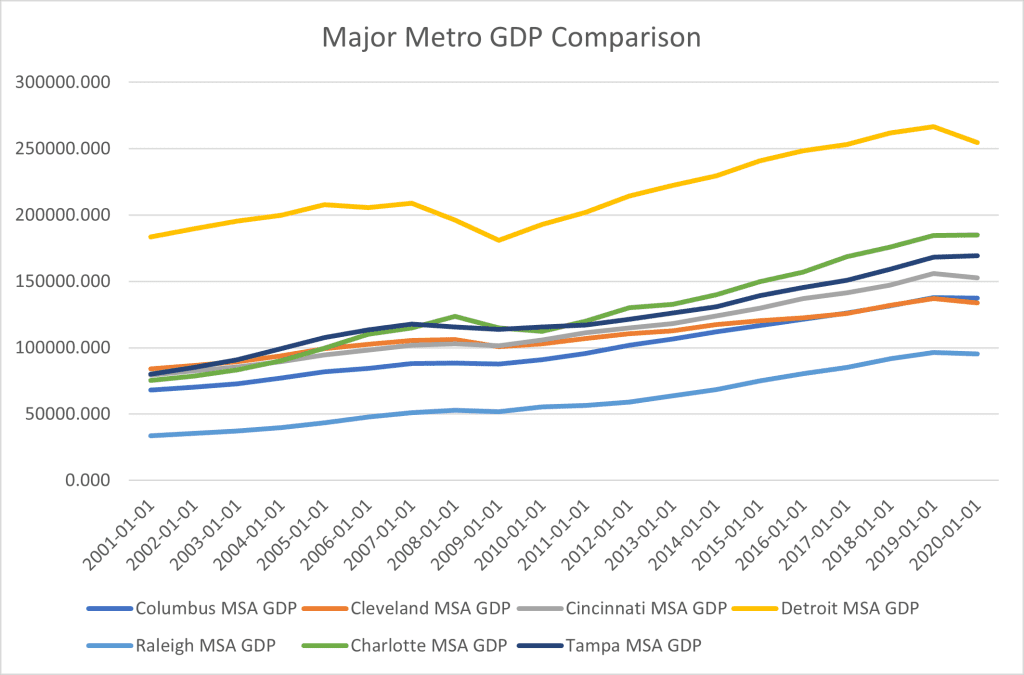
Ohio is a large state located in the Midwestern region of the United States with the 7th largest economy in the United States and the 7th largest state by population. In fact, as the table below illustrates, if Ohio were a nation, its economy would be larger than Sweden, Turkey, and Poland and would be the 22nd largest nation on the earth.
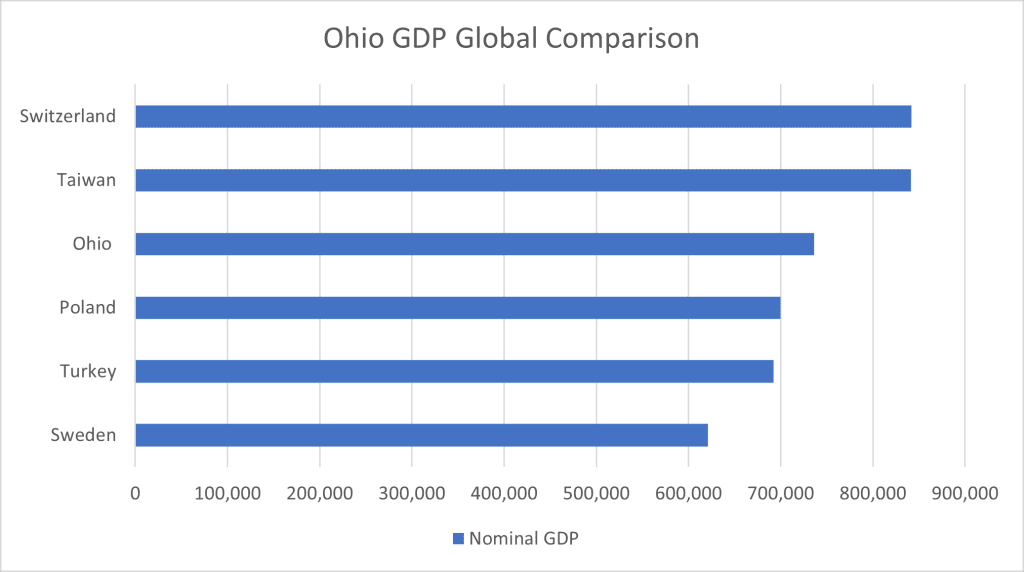
Ohio has a substantial private sector employment base that companies can choose workers from. As the table outlines below, Ohio is just behind Illinois in the Midwest with its total non-farm payroll which considering the size of Chicagoland is an accomplishment.
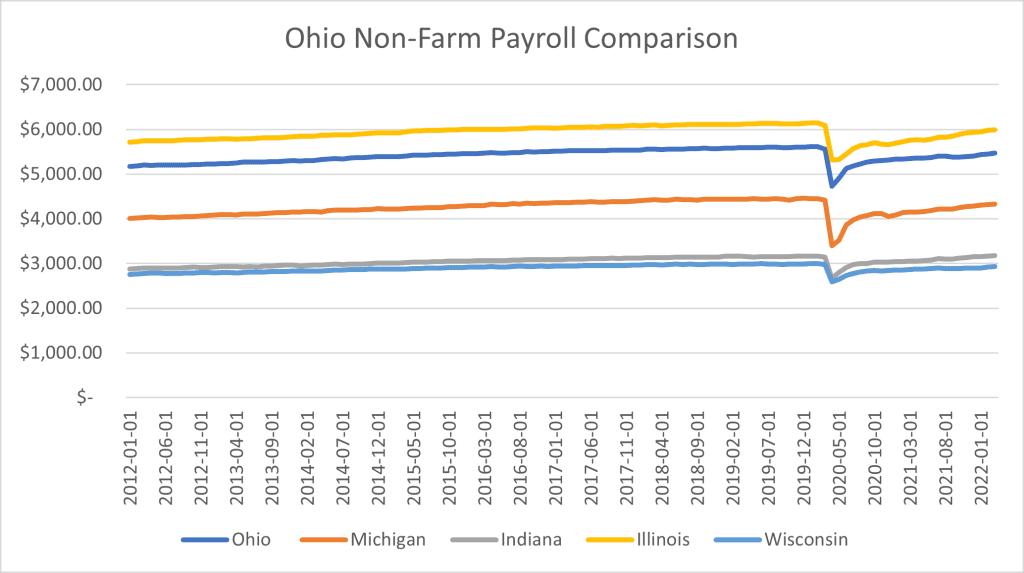
Again, when reviewing the overall size of the Ohio economy, it lands just behind Illinois again in the Midwest and illustrates a continued growth pattern over the last decade.
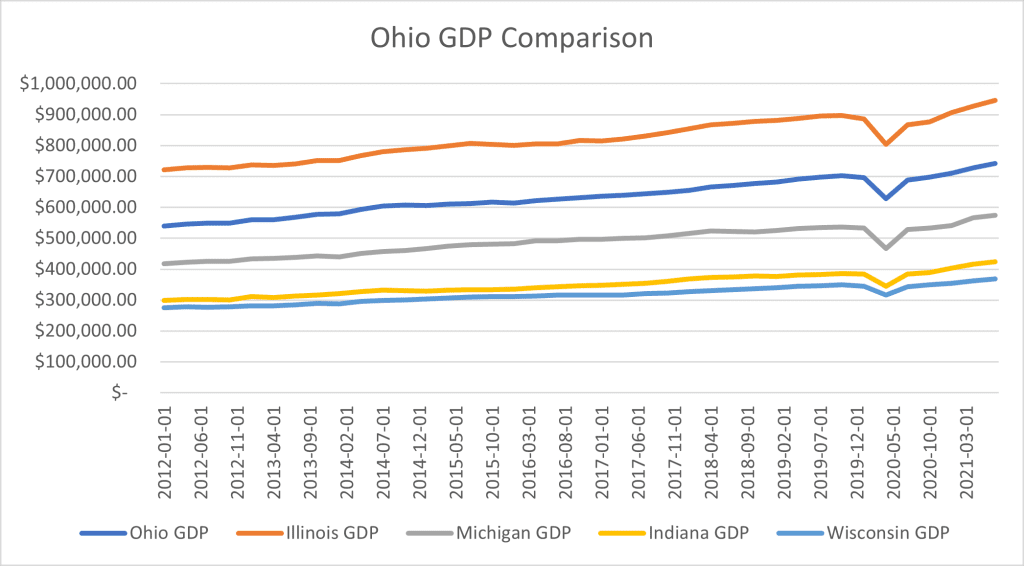
Growing economies are attractive to companies considering where to invest and vital for regions seeking high-wage job creation and capital investment to understand. Ohio offers a large economic base upon which companies can capitalize on in multiple markets both factors of which are a major asset.